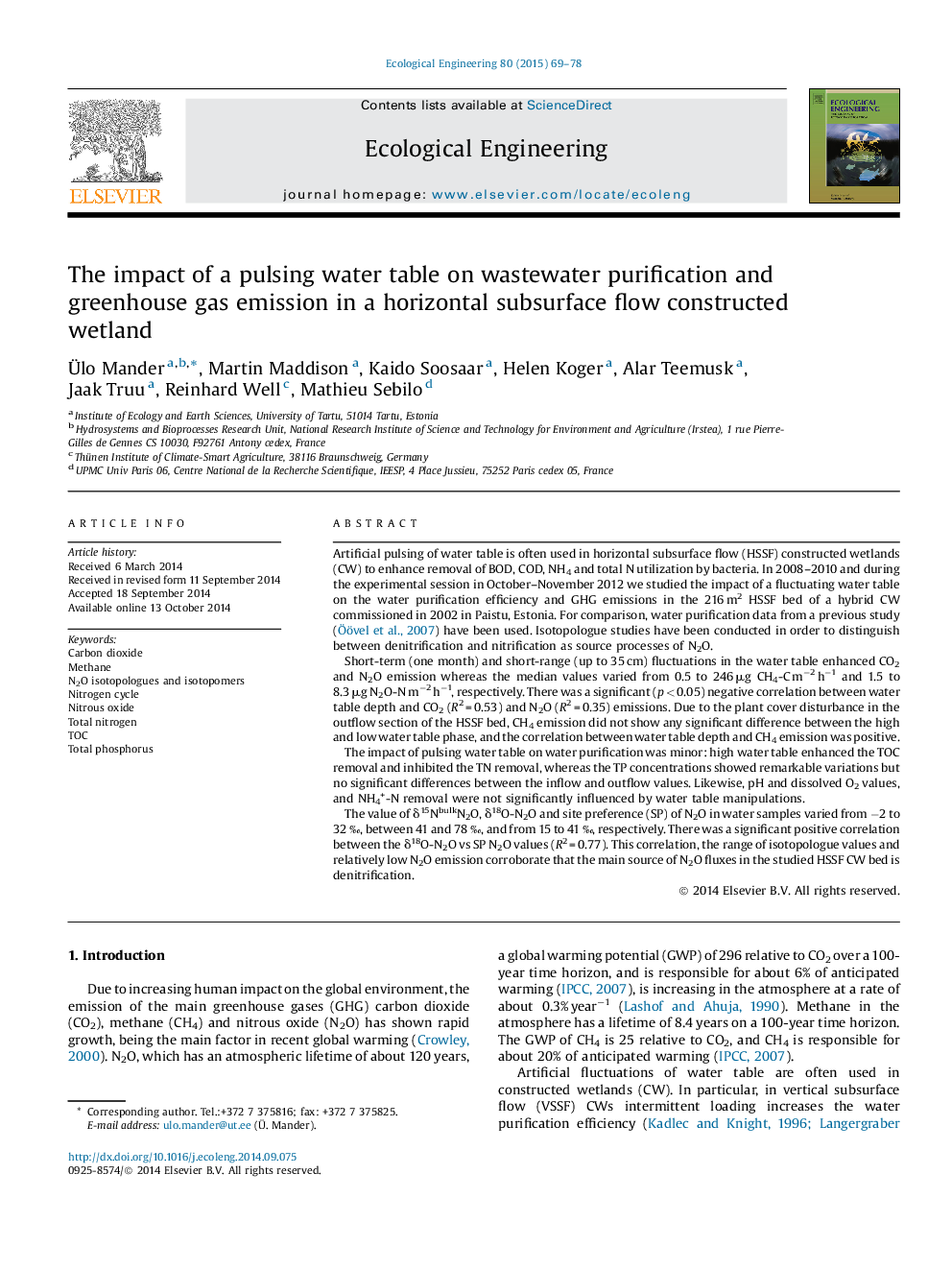| کد مقاله | کد نشریه | سال انتشار | مقاله انگلیسی | نسخه تمام متن |
|---|---|---|---|---|
| 4389031 | 1618019 | 2015 | 10 صفحه PDF | دانلود رایگان |
• Short-term and low-range water fluctuations in a HSSF CW increased CO2 and N2O emissions and can decrease CH4 fluxes.
• Impact of water table fluctuations on water purification efficiency is not remarkable but the phosphorus removal values shows more variability
• Isotopologue studies and low level of N2O emission corroborate that the main process in N2O production is denitrification.
Artificial pulsing of water table is often used in horizontal subsurface flow (HSSF) constructed wetlands (CW) to enhance removal of BOD, COD, NH4 and total N utilization by bacteria. In 2008–2010 and during the experimental session in October–November 2012 we studied the impact of a fluctuating water table on the water purification efficiency and GHG emissions in the 216 m2 HSSF bed of a hybrid CW commissioned in 2002 in Paistu, Estonia. For comparison, water purification data from a previous study (Öövel et al., 2007) have been used. Isotopologue studies have been conducted in order to distinguish between denitrification and nitrification as source processes of N2O.Short-term (one month) and short-range (up to 35 cm) fluctuations in the water table enhanced CO2 and N2O emission whereas the median values varied from 0.5 to 246 μg CH4-C m−2 h−1 and 1.5 to 8.3 μg N2O-N m−2 h−1, respectively. There was a significant (p < 0.05) negative correlation between water table depth and CO2 (R2 = 0.53) and N2O (R2 = 0.35) emissions. Due to the plant cover disturbance in the outflow section of the HSSF bed, CH4 emission did not show any significant difference between the high and low water table phase, and the correlation between water table depth and CH4 emission was positive.The impact of pulsing water table on water purification was minor: high water table enhanced the TOC removal and inhibited the TN removal, whereas the TP concentrations showed remarkable variations but no significant differences between the inflow and outflow values. Likewise, pH and dissolved O2 values, and NH4+-N removal were not significantly influenced by water table manipulations.The value of δ15NbulkN2O, δ18O-N2O and site preference (SP) of N2O in water samples varied from −2 to 32 ‰, between 41 and 78 ‰, and from 15 to 41 ‰, respectively. There was a significant positive correlation between the δ18O-N2O vs SP N2O values (R2 = 0.77). This correlation, the range of isotopologue values and relatively low N2O emission corroborate that the main source of N2O fluxes in the studied HSSF CW bed is denitrification.
Journal: Ecological Engineering - Volume 80, July 2015, Pages 69–78
